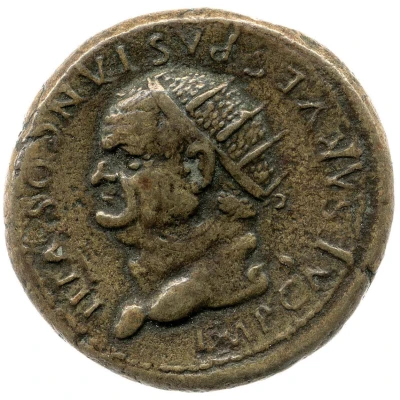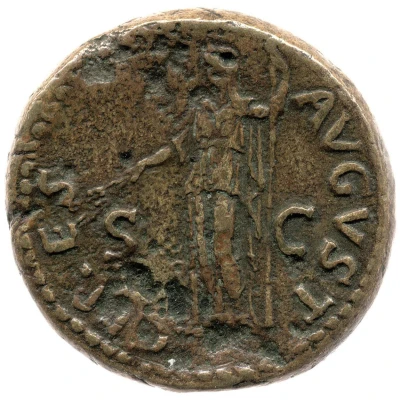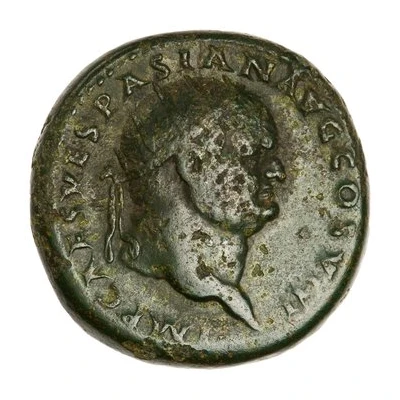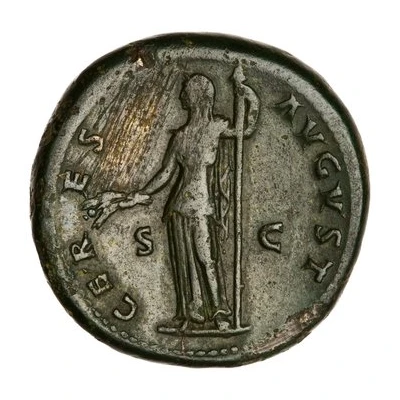


© Trustees of the British Museum
Dupondius - Vespasian CERES AVGVST S C; Ceres
| Bronze | 12.3 g | 27.5 mm |
| Issuer | Rome › Roman Empire (27 BC - 395 AD) |
|---|---|
| Emperor | Vespasian (Titus Flavius Vespasianus) (69-79) |
| Type | Standard circulation coin |
| Years | 77-78 |
| Value | 1 Dupondius = ⅛ Denarius |
| Currency | Denarius, Reform of Augustus (27 BC – AD 215) |
| Composition | Bronze |
| Weight | 12.3 g |
| Diameter | 27.5 mm |
| Shape | Round (irregular) |
| Technique | Hammered |
| Demonetized | Yes |
| Updated | 2024-10-06 |
| Numista | N#249908 |
|---|---|
| Rarity index | 100% |
Reverse
Ceres, veiled, draped, standing left, holding two corn-ears and poppy in lowered right hand and vertical sceptre in left.
Script: Latin
Lettering: CERES AVGVST S C
Translation:
Ceres Augusta. Senatus Consultum.
Ceres, the venerable. Decree of the Senate.
Comment
Mass varies: 11.215–13.26 g;Diameter varies: 27.35–27.96 mm;
Source: Online Coins of the Roman Empire (OCRE)
Interesting fact
The Dupondius coin featuring Vespasian and Ceres, minted between 77-78 AD, is an interesting piece of history. One fascinating fact about this coin is that it was used as a form of propaganda by the Roman Empire. The image of Ceres, the goddess of agriculture and fertility, on the reverse side of the coin was meant to promote the idea of abundance and prosperity under Vespasian's rule. This coin was circulated during a time when the Roman Empire was facing economic challenges, and the image of Ceres was a symbol of hope and prosperity for the people.

